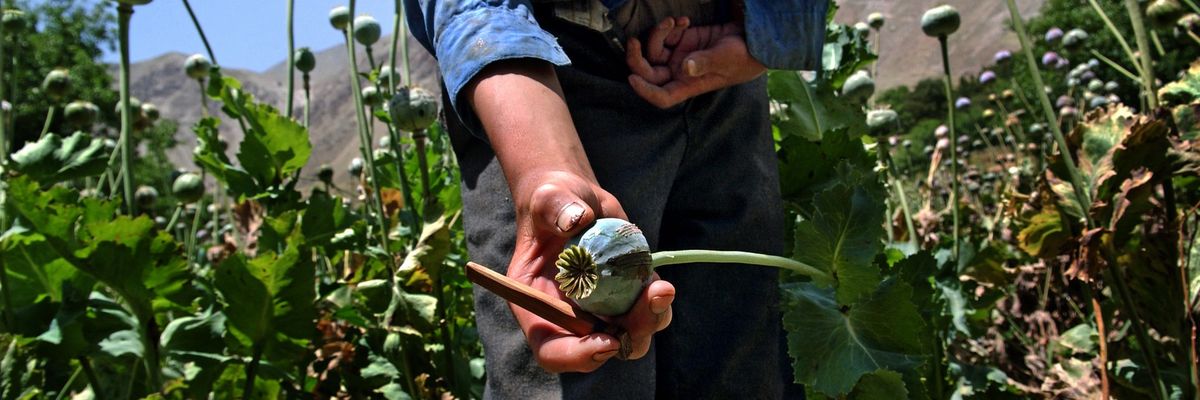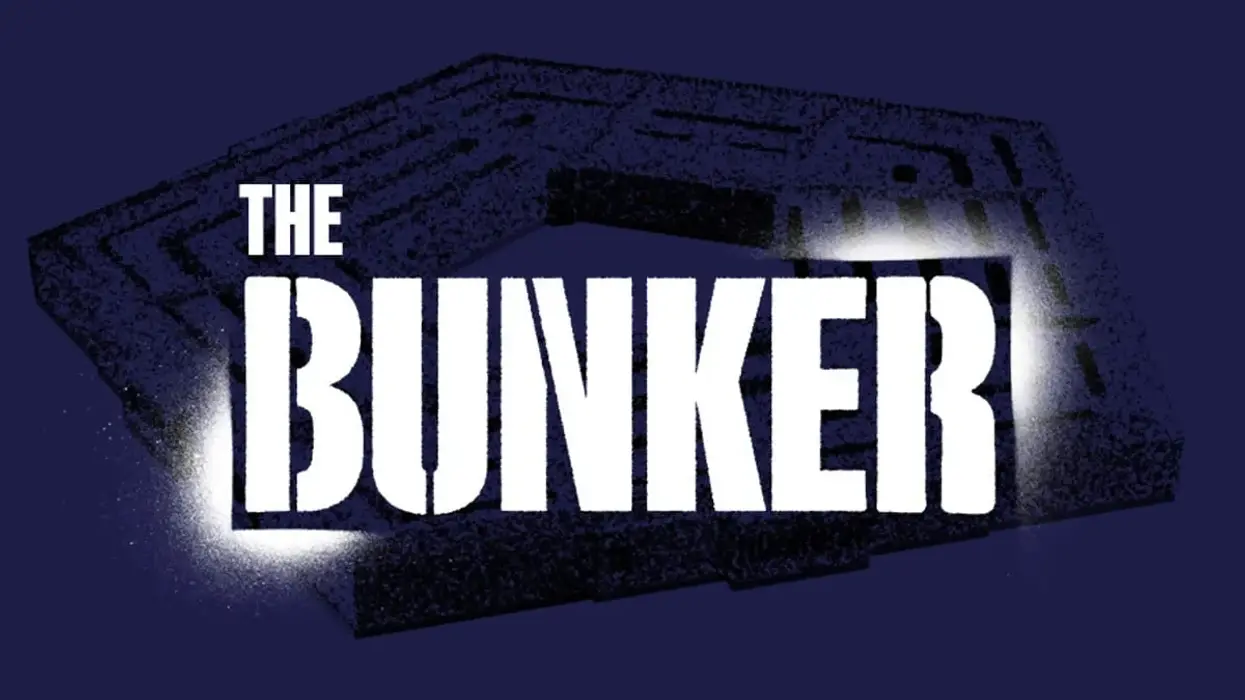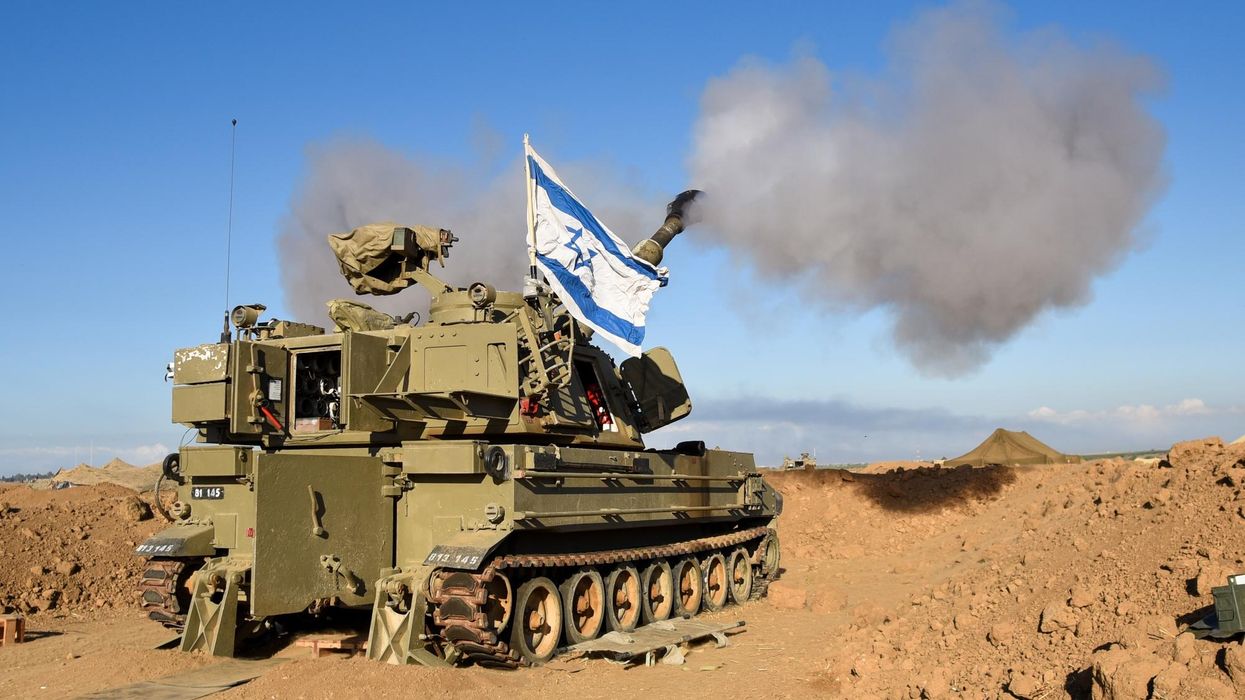In March 2002, during a visit to Nangrahar province east of Kabul, I asked a group of Afghan village elders how they would respond if the United States and its allies were to fulfil a promise to destroy their fields of opium poppies. “That is simple,” their headman replied. “First we would kill every Westerner in Nangrahar, and then we would join the Taliban.”
Pashtuns have a strong sense of hospitality but also a particular sense of humor. He left a distinct pause before adding with a smile, “But not you of course, because you are our guest.” I thanked him warmly, as it did not seem like the right time or place for a lecture on the evils of the heroin trade.
For two generations, opium poppy cultivation and heroin production have been central to the Afghan economy. During that time, Afghanistan has risen to occupy the position in the global heroin trade formerly occupied by the “Golden Triangle” of northern Burma, Thailand, and Laos, after successful state anti-heroin campaigns in that region. The reasons for heroin production were essentially the same in both Southeast Asia and Afghanistan: a combination of a good climate and terrain for cultivation with local civil wars, state weakness or absence, and general lawlessness.
Afghan production took off in the 1980s, when Western-backed Mujahedin parties fighting against the Afghan communist state and the Soviet Union encouraged and taxed the heroin trade just as the Taliban have done to support their war since 2001. The CIA has been accused of deliberately helping heroin production by the Mujahedin, just as they were in the cases of anti-communist militia in Indochina and Central America. The truth seems to be rather that while the CIA did not actively help the heroin trade by local allies, it did turn a blind eye to it. The United States has often turned the same blind eye to the heroin-dealing of allied Afghan warlords since 2001.
The Mujahedin parties and the Taliban continued to tax the trade as part of their internecine civil wars in the 1990s, and by 1999, Afghan opium production had reached an estimated 4,000 metric tons. This provided roughly three quarters of the world’s heroin at that time.
In July 2000, as part of an agreement with the United Nations, Taliban leader Mullah Omar declared the cultivation of opium poppies to be un-Islamic, and the Taliban launched a campaign to suppress production resulting in the area under cultivation dropping by more than 90 percent. This has been the only successful anti-heroin campaign by an Afghan state for the past 50 years, with the area under cultivation dropping to a tiny fraction of its previous level. The Taliban were able to achieve this by a combination of ruthlessness, moral authority, and presence across the ground across rural Afghanistan — the same factors that allowed them to assist the United Nations in a remarkably successful program of polio vaccination.
It has been widely alleged that the Taliban’s ban was merely an attempt to manipulate the trade, and that they had stored large quantities of heroin that they were planning to release onto international markets after prices rose. It does indeed seem likely that the Taliban were holding this option in reserve as a strategy.
However, their chief motivations for the ban appear to have been different. In the first place, the Taliban, with their strict ideology of Koranic puritanism, detest heroin consumption on moral grounds. Every person with links to the Taliban has emphasized this. When asked how then the Taliban could have allowed and taxed the heroin trade, the reply has simply been,“They need the money. They are fighting a war.” The Taliban are estimated to have derived between 20 and 30 percent of their income from taxing the heroin trade.
In 1999-2000, the other chief motivation for the ban seems to have been a clumsy Taliban attempt to gain international diplomatic recognition and international aid. Compensation delivered through the Taliban government would both help Afghan farmers and strengthen Taliban hold on the countryside and Afghanistan in general. The United States did indeed send $43 million in food aid to Taliban-controlled Afghanistan, partly in response to this ban.
Whether the Taliban government would have maintained their ban on heroin production is impossible to say, because after 9/11 they were overthrown by the United States and its Afghan allies from the Northern Alliance and the former Mujahedin. The result was an explosion of opium cultivation and heroin production.
In 2014, the U.S. Special Inspector General for Afghanistan, or SIGAR, reported that the area of Afghanistan under opium poppy cultivation had risen by more than 200,000 hectares since 2001, and that Afghanistan accounted for some 83 percent of global heroin. Opium production rose from about 180 tons in 2001 to more than 8,000 by 2007.
The chief markets for Afghan heroin have been Europe, the countries of the former USSR, Iran, and Pakistan, with smaller quantities going to the United States, China, and elsewhere. Heroin is estimated to account for more than 50 percent of real Afghan GDP (exclusive of international aid).
This precipitous rise in heroin production after 2001 was due to a combination of Taliban protection, general lawlessness, government weakness, and active heroin trading by senior members of the U.S. established Afghan state. Among many other leading figures, Ahmed Wali Karzai, brother of President Hamid Karzai, was widely accused of involvement in the heroin trade.
In Nangrahar province, all four of the warlord clans restored to power by the United States in 2001 were universally believed by local people with whom I spoke to be benefiting from the trade, which they shared between themselves. In Helmand, rival figures in the heroin trade would not only switch from the Taliban to the government side and back according to local advantage, but would manipulate the Americans and British against each other.
In talks with the United States, Russia, and Iran, and in statements since reconquering power, the Taliban leadership has repeatedly promised that they will once again ban opium an heroin production in Afghanistan. In return — as in 2000 — they want international recognition, and international aid. If they keep their promise to prevent international terrorism and respect Shia rights, then recognition from Russia, China, and Iran will probably be forthcoming. Financial compensation would have to come chiefly from the European Union and China.
The United States can contribute to this international effort, and use it to help achieve other positive goals. Substantial U.S. humanitarian aid to ameliorate the poverty of ordinary Afghans should continue as a matter of duty, given American promises over the past 20 years. Second, aid can be linked to Taliban fulfilment of promises over both heroin and international terrorism, and as a way of influencing the Taliban towards moderation in their domestic policies.
Finally, the fight against the global heroin trade is something on which the United States, the European Union, Russia, Iran, and China genuinely all agree. Joint efforts against Afghan heroin can therefore form a valuable part of a wider strategy of limited but valuable co-operation between the United States and these countries in pursuit of vital common goals. The Biden administration says that it wants to engage in cooperation with Moscow and Beijing where possible. Counter-narcotics is one good place to begin.
















